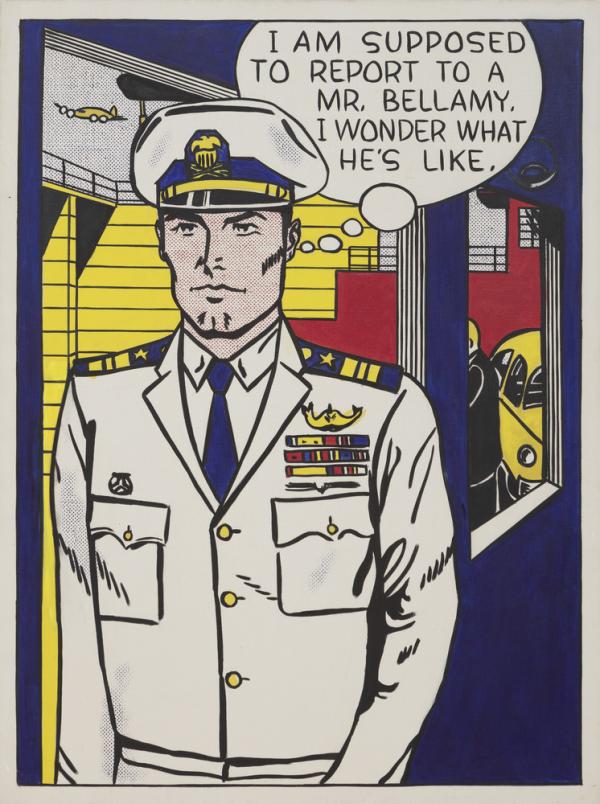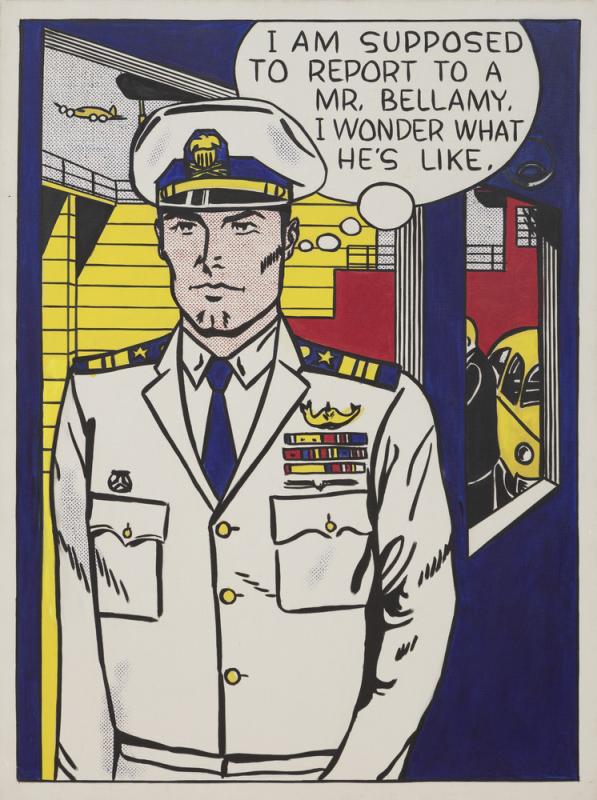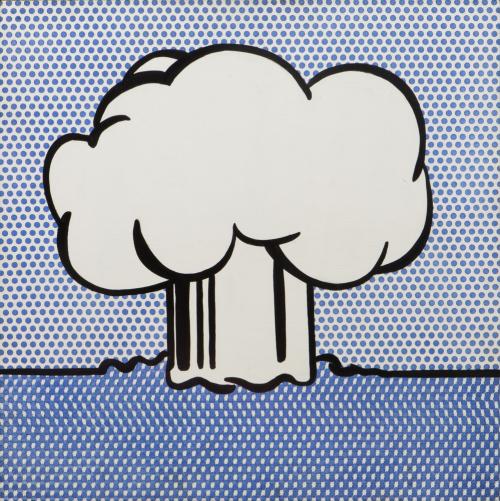Skip to main content
Mr. Bellamy
Artist
Roy Lichtenstein
(American, 1923 - 1997)
Date1961
MediumOil on canvas
DimensionsUnframed: 56 1/4 × 42 1/8 in. (142.88 × 107 cm)
Framed: 56 3/4 × 42 13/16 × 1 5/8 in. (144.15 × 108.75 × 4.13 cm)
Framed: 56 3/4 × 42 13/16 × 1 5/8 in. (144.15 × 108.75 × 4.13 cm)
Credit LineCollection of the Modern Art Museum of Fort Worth, Museum purchase, The Benjamin J. Tillar Memorial Trust, acquired from the collection of Vernon Nikkel, Clovis, New Mexico, 1982
Object number1982.3
Status
Not on viewSignedverso, u.r.c. on cardboard backing "Roy Lichtenstein 1961"
Copyright© Estate of Roy Lichtenstein
Category
Label TextRoy Lichtenstein’s comics-based compositions rival Andy Warhol’s images of Campbell’s Soup cans as the most influential examples of Pop art. Lichtenstein’s paintings have attained such familiarity that it is easily forgotten that they provoked tremendous controversy at the time, since presenting comic-book images as high art was a radical and provocative gesture. Mr. Bellamy, 1961, an early example of Lichtenstein’s truly Pop work, was one of the first in a series featuring comic strip–derived soldiers. It shows a military officer, possibly a pilot, wondering about the man to whom he is to report.
Mr. Bellamy’s thick black outlines, flat primary colors, stylized forms, thought balloon, and especially its hand-painted approximations of Benday dots—the result of the mechanical screenprinting process then used by newspapers and other printed sources—declare the painting’s comic-book origins. Lichtenstein’s Mr. Bellamy departs from its source, however, in its composition and scale, alteration of the comic’s original text, and transformation from mass-produced ephemera to stand-alone art object.
Mr. Bellamy may be unique among Lichtenstein’s comic-book paintings because of its personal content. In 1961, the director of the Green Gallery, an important New York venue for presenting the work of emerging Pop and Minimalist artists, was Richard Bellamy. It is this influential “Mr. Bellamy” to whom the officer, as a stand-in for an artist, will introduce himself. In this respect, Mr. Bellamy is an in-joke to the art world of that era.
Mr. Bellamy’s thick black outlines, flat primary colors, stylized forms, thought balloon, and especially its hand-painted approximations of Benday dots—the result of the mechanical screenprinting process then used by newspapers and other printed sources—declare the painting’s comic-book origins. Lichtenstein’s Mr. Bellamy departs from its source, however, in its composition and scale, alteration of the comic’s original text, and transformation from mass-produced ephemera to stand-alone art object.
Mr. Bellamy may be unique among Lichtenstein’s comic-book paintings because of its personal content. In 1961, the director of the Green Gallery, an important New York venue for presenting the work of emerging Pop and Minimalist artists, was Richard Bellamy. It is this influential “Mr. Bellamy” to whom the officer, as a stand-in for an artist, will introduce himself. In this respect, Mr. Bellamy is an in-joke to the art world of that era.








